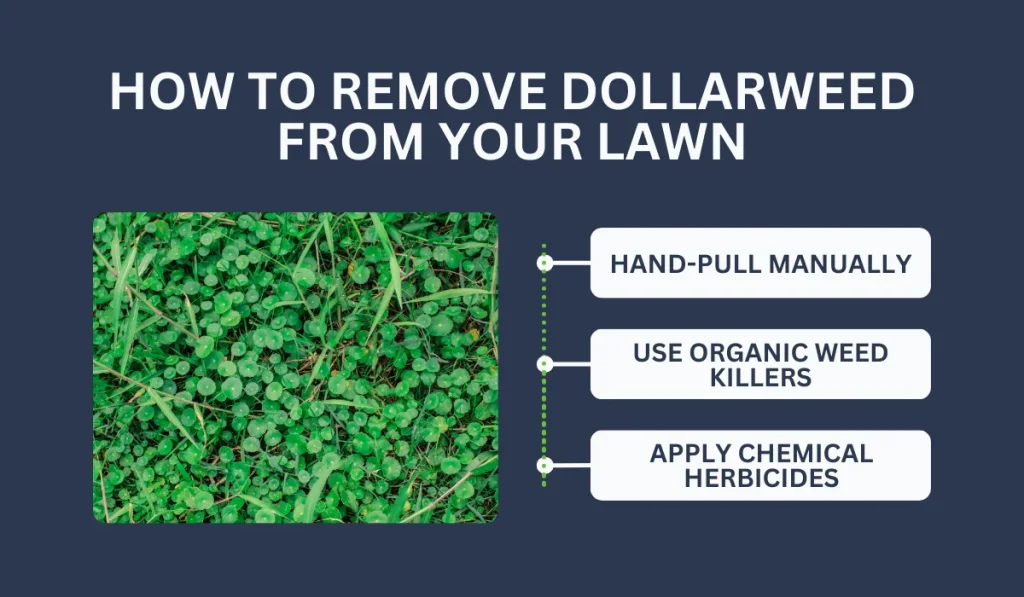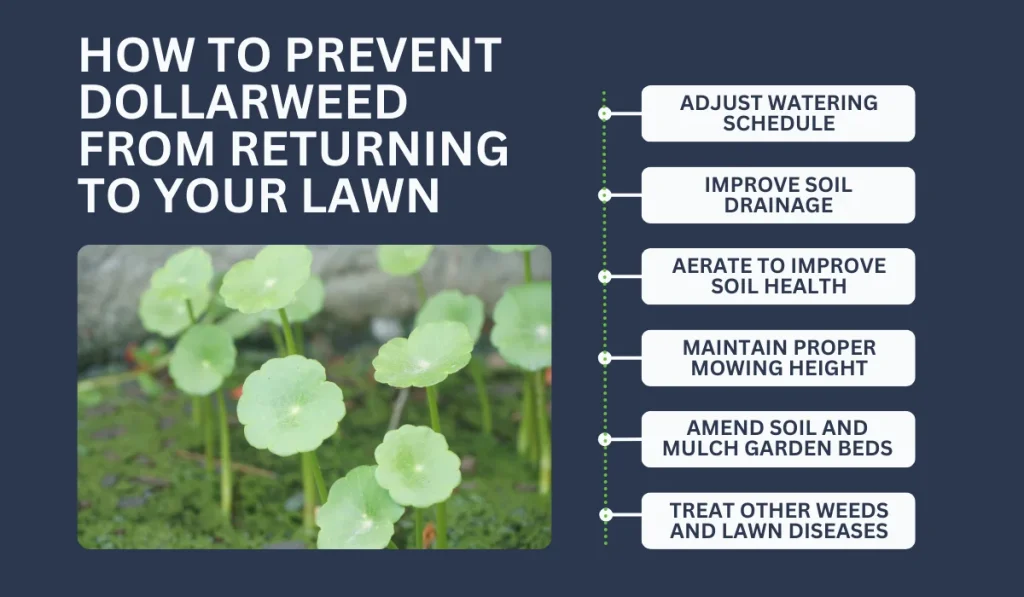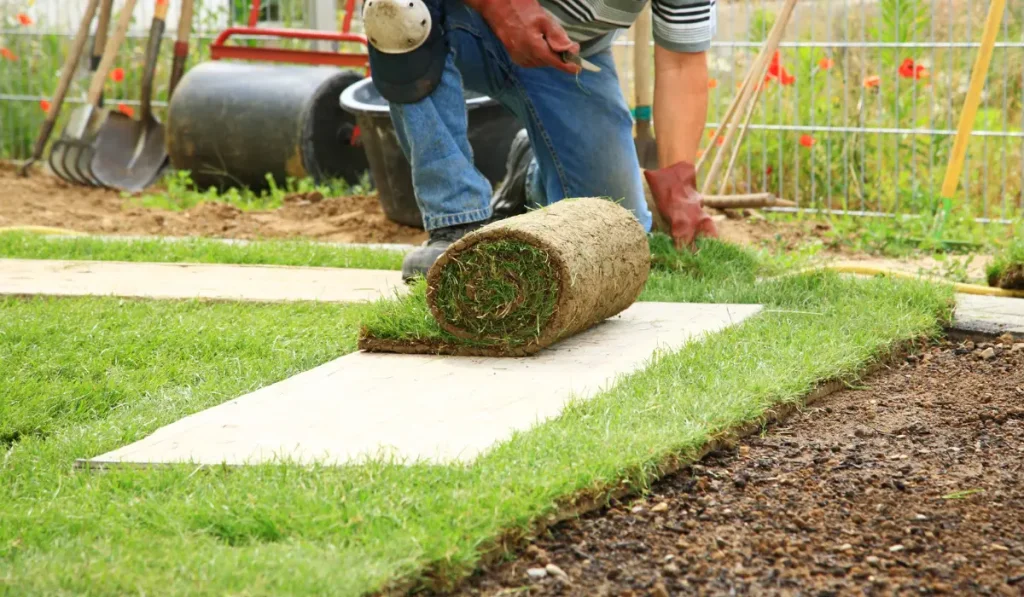Dollarweed, with its creeping leaves and rapid growth, often becomes a gardener’s nightmare. To effectively remove it, a combination of manual removal and herbicides is a must.
Keep reading to learn strategies for tackling these weeds and reclaiming control of your garden spaces.
Key Takeaways
- Dollarweed grows in California lawns and needs both manual and chemical methods to remove.
- Hand-pulling works for small patches, but you must get the whole plant to stop regrowth.
- Organic options like baking soda, boiling water, or vinegar-based herbicides can help, but they need regular use.
- Good lawn care, such as watering, mowing, and aerating, can prevent dollarweed from returning and keep your lawn healthy.
How to Remove Dollarweed From Your Lawn

Dollarweed, or pennywort, can persist due to its underground rhizomes. In California, controlling this perennial weed may need manual and chemical methods.
As homeowners, here’s how to kill these uninvited guests with different weed control options that suit your lawn care philosophy.
Hand-Pull Manually
For a DIY approach, pulling dollarweed by hand is straightforward but needs persistence. This method suits smaller, isolated patches.
When hand-pulling dollarweed, dig deep enough to remove all parts of the plant to prevent regrowth. Even small pieces of roots, nodes, rhizomes, and tubers left behind can lead to regrowth. Wet the soil beforehand to make pulling easier. Grasp each plant firmly near the base and gently extract it.
This can be a bit tedious, but it is an environmentally friendly solution that avoids herbicides. Regularly inspect the lawn to catch any new growth.
Use Organic Weed Killers
For those who prefer an organic route, certain household items can help kill dollarweed. Baking soda and boiling water are common choices. Good results often need consistent application over several weeks.
While baking soda is sometimes used as a lawn weed killer, its effectiveness on dollarweed is inconsistent. It’s worth trying on smaller patches, but may not deliver uniform results.
Like how boiling water is used to scorch lily pads in ponds, it can scorch weeds. But, it will likely damage nearby grass. Use this method carefully for isolated spots where grass damage isn’t a concern.
Apply Chemical Herbicides
Chemical solutions are often reserved for more severe infestations. Selective herbicides with active ingredients like atrazine focus only on broadleaf weeds.
Applying a post-emergent herbicide using a sprayer directly to the leaves is effective after the weed has appeared. For a pre-emergent herbicide, apply before the weed appears. We recommend applying pre-emergent herbicide in February to fight springtime weeds like Dollarweed.
Be sure to carefully read the product instructions, as misuse can damage the lawn.
Roundup can effectively kill dollarweed but must be applied cautiously. It is non-selective and can kill nearby grass and other plants.
How to Prevent Dollarweed From Returning to Your Lawn

Dollarweed can be a persistent problem, but there are ways to reduce its return. Here are some prevention strategies to use for maintaining a healthy lawn.
Adjust Watering Schedule
Dollarweed thrives in moist conditions, so monitoring how much water your lawn receives is key. An inch of water a week is usually enough for most lawns, including centipede grass and Bermudagrass.
Before determining if watering is necessary, it’s best to check the lawn’s dryness with a soil moisture meter.
Improve Soil Drainage
Poor drainage can lead to waterlogged areas where dollarweed thrives. Installing French drains or using raised flower beds can help manage excess moisture. For warm-season turfgrass like Zoysiagrass, maintaining good drainage is vital. It discourages this bright green weed.
Aerate to Improve Soil Health
Aerating the lawn can drastically improve its health and resilience. Relieving compaction allows air, water, and nutrients to permeate the root system efficiently. It is particularly effective for lawns struggling with heavy, compacted soils. To promote sturdy growth, it benefits grasses like bermudagrass and St. Augustine grass.
Maintain Proper Mowing Height
Mowing to the correct height helps maintain a healthy lawn that naturally resists weeds. Different types of grass thrive at different heights.
For St. Augustine lawns, keep the mowing height at about 3–4 inches. For other types of grass, adjust the height accordingly to maintain lawn density and discourage weed growth.
Amend Soil and Mulch Garden Beds
Amending soil with organic matter creates a better environment for grass than weeds. In garden beds, applying a layer of mulch suppresses weeds by blocking sunlight. Mulch also retains soil moisture levels and maintains temperature, which is vital for plant health in flower beds.
Treat Other Weeds and Lawn Diseases
Dollarweed often grows with other common weeds, such as crabgrass, dichondra, or silver dollar. Typically, it produces small white flowers, making it easier to identify. Treating these weeds at the same time allows for a more comprehensive approach.
They thrive in conditions conducive to lawn diseases, such as brown patch or root rot. If signs of lawn diseases appear, treat them with appropriate fungicides to stop the spread and strengthen your lawn’s health.
Frequently Asked Questions
Dollarweed’s persistence leaves many homeowners wondering if lime is an effective treatment. Below are answers to some common concerns.
Is it true that lime can remove dollarweed, or is that just a myth?
There’s a belief that lime can control dollarweed by altering soil pH, making it less hospitable for the plant. While lime may help some plants thrive, it doesn’t get rid of dollarweed. If lime raises the soil pH to levels unfavorable for dollarweed, it might reduce its presence, but lime alone isn’t a guaranteed solution.
How often should I treat my yard to prevent dollarweed from coming back?
To keep dollarweed at bay, treatments should be applied several times throughout the growing season. Start early in spring with pre-emergent herbicides. Then, continue with post-emergent treatments during the summer. Regular lawn maintenance, such as proper mowing and watering, can also reduce its ability to invade lawns.



